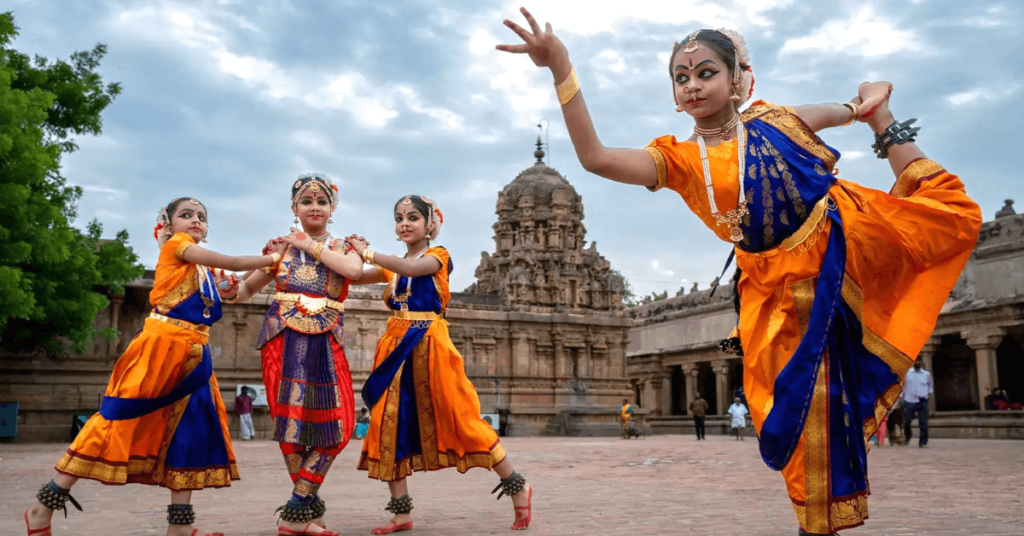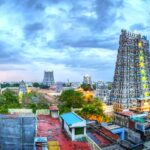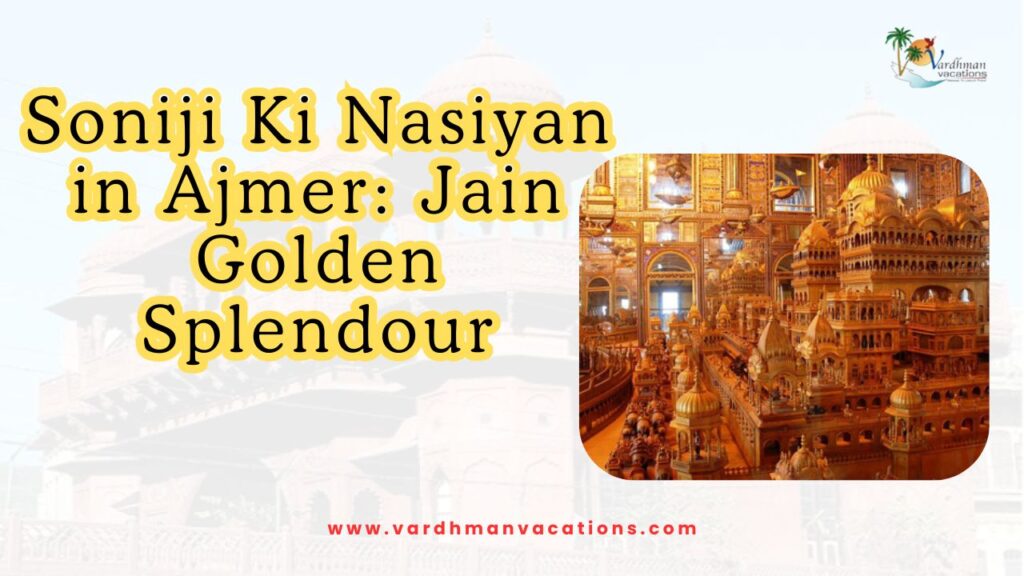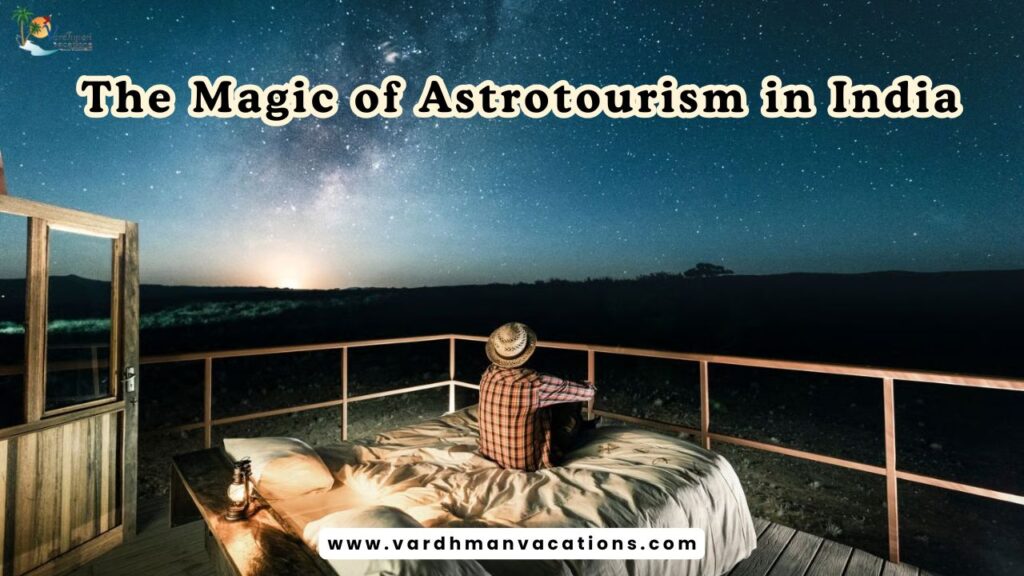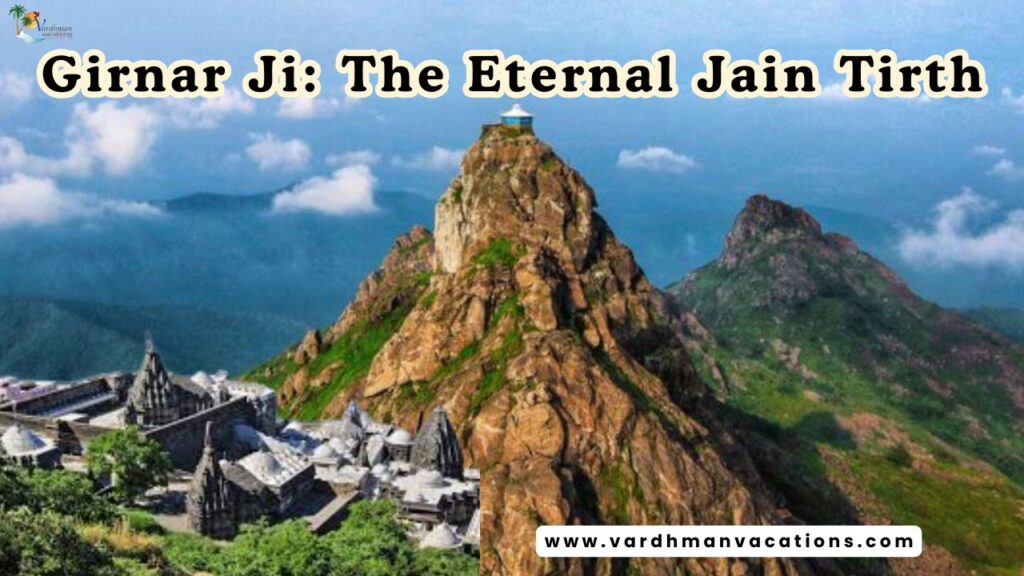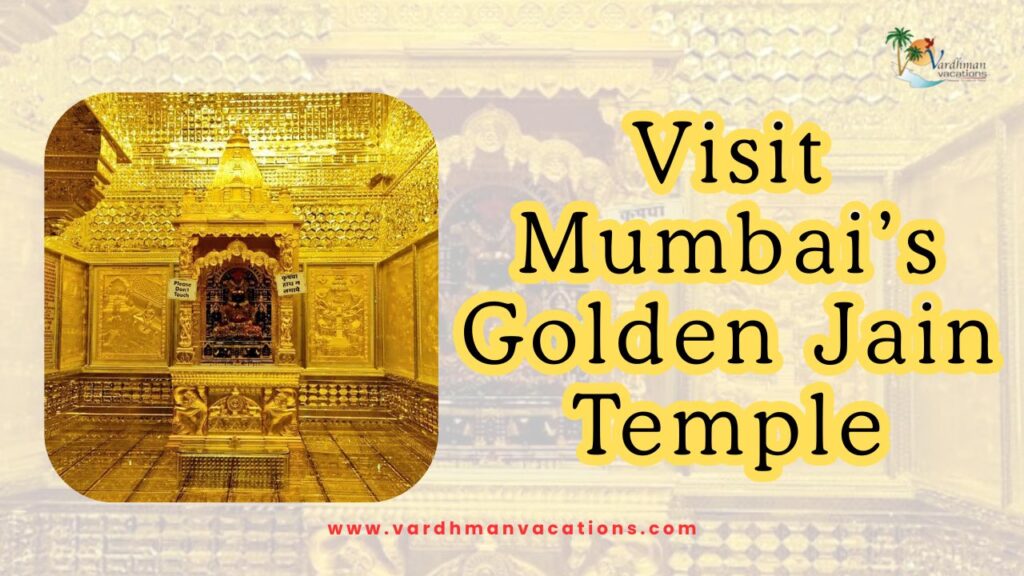Thanjavur, originally Tanjore, is a major religious, artistic, and cultural center in South India. It is home to the Great Living Chola Temples and India’s finest examples of Chola architecture, including the Brihadeeswara Temple, a UNESCO World Heritage Site. Thanjavur is also known as the ‘Rice Bowl of Tamil Nadu‘ due to its significance as an agricultural center. The city has a rich historical and cultural legacy, including its association with the Chola dynasty, known for its spectacular temples and artistic practices. Thanjavur is also famous for its handicrafts, bronzes, handlooms, silk and cotton sarees, and South Indian musical instruments. The region is a major agricultural producer, including rice, sugarcane, and bananas.
Best Time to Visit Thanjavur
Thanjavur is a popular tourist destination that can be visited at any time of the year. However, the best time to visit Thanjavur is during the winter, from December to February, when the weather is excellent and temperatures range from 21°C to 31°C. This is the peak season for visiting Thanjavur, with thousands of pilgrims and travelers visiting the town during these months. Summers and monsoons also attract some tourists, but the winter months offer the best experience due to the hot tropical climate in the region.
How to Reach Thanjavur
By Flight: The nearest airport to Tanjore is Tiruchirappalli International Airport (Trichy Airport), which is located about 60 kilometers away. It has regular flight connectivity to major cities in India, including Chennai, Bangalore, Delhi, Hyderabad, and Mumbai. It also has connections to some international destinations, such as Singapore, Kuala Lumpur, Dubai, and Colombo. The second nearest airport is Madurai Airport, which is 190 kilometers away.
By Train: Tanjore has a railway station (TJ) with trains to major cities across India, including Chennai, Trichy, Madurai, Bangalore, and Delhi.
By Road: Thanjavur has good road connections to other cities in Tamil Nadu and neighboring states. National highways NH 45 and NH 81 go through Thanjavur.
Major Tourist Attractions in Thanjavur
For those who want to experience Tamil culture and admire its architectural wonders, visiting Thanjavur is a must. The city boasts numerous temples, religious shrines, and UNESCO World Heritage Sites. Art enthusiasts can also explore the city’s art galleries. A tour of Thanjavur promises cherished memories for a lifetime.
Brihadeeshwarar Temple
Entry Fee: Free
Timings: 6:00 AM to 8:30 PM Daily
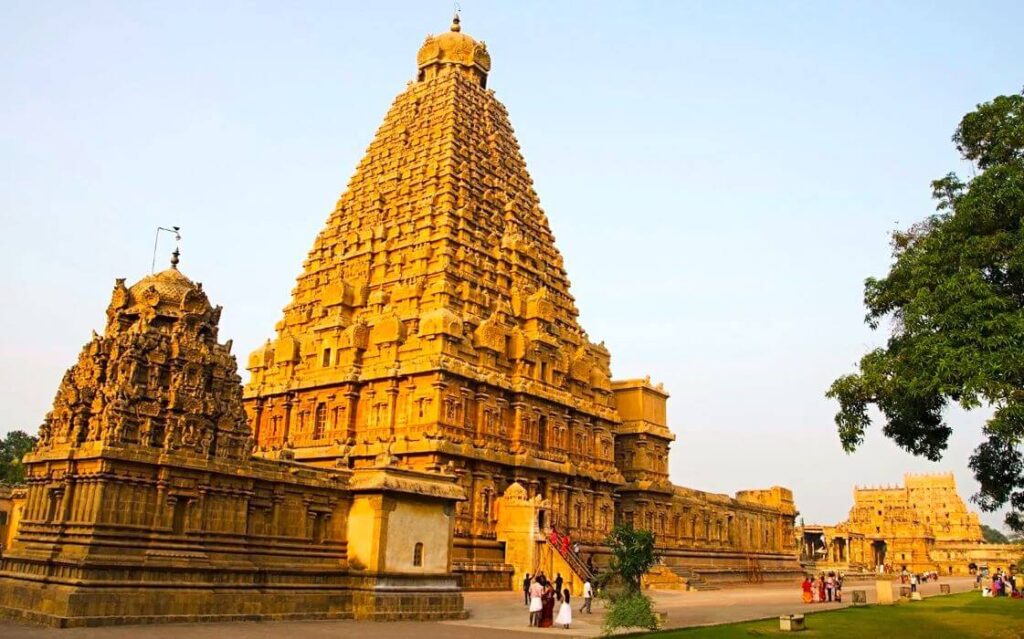
The Brihadeeshwarar Temple, also known as the Periya Kovil (Big Temple) or Raja Rajeswara Temple, is a UNESCO World Heritage Site in Tanjore. It was erected in 1010 CE by King Raja Raja Chola I and is a stunning example of Chola dynasty architecture. The temple has a 59.8-meter-tall vimana, and its walls are adorned with intricate carvings depicting mythology, Chola history, and daily life.
The temple is dedicated to Lord Shiva and is a significant pilgrimage site for Hindus, particularly Saivites. The temple complex contains inscriptions that offer valuable historical insights into Chola governance, social life, and economic structure. Additionally, the temple is famous for its exquisite bronze statues, including the iconic nartakis depicting Bharatanatyam karanas, which contribute to its status as a UNESCO World Heritage Site.
Thanjavur Royal Palace
Timings: 9:00 AM to 5:00 PM Daily
Entry Fee: Foreigners Adult – Rs.200, Children – Rs.70 (Child age – 7 to 12 years old)
For Indians Adult – Rs.60, Child – Rs.20 (It includes Saraswathy Mahal Library, Archaeology Monuments, Art Gallery)
Camera: Indian Rs.50, Foreigner – Rs.100
Video Camera: Indian – Rs.150, Foreigner – Rs.200
Holidays: Government Holidays & Art Gallery closed for Local Holidays also
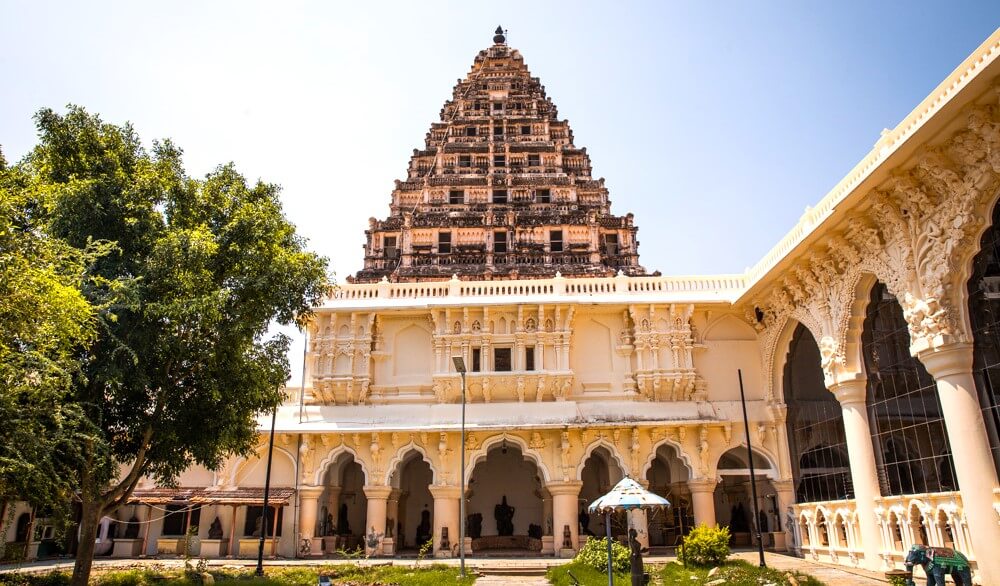
The Thanjavur Palace, also known as Maratha Palace, was the residence of the Maratha rulers in Thanjavur. It was originally built by the Nayaka dynasty in the 16th century as the Sivaganga Fort. The Marathas expanded and renovated the palace in the 17th century, blending different architectural styles reflecting the influence of the Nayakas and the Marathas. The complex includes courtyards, halls, audience chambers, and decorative plaster and wall paintings depicting scenes from mythology and history.
The palace is divided into sections like Public Darbar Grand halls, Private Quarters, Armoury, and a temple complex. A part of the palace is open to the public as a museum, while other sections are still the official residence of the Maratha royal family descendants. The palace also houses the King Saroboji Saraswathi Mahal Library, Art Gallery, and Sangeetha Mahal.
Saraswathi Mahal Library
Entry Fee: Free
Timings: 9:00 AM to 5:00 PM, closed on Wednesdays and public holidays
Camera: Not allowed
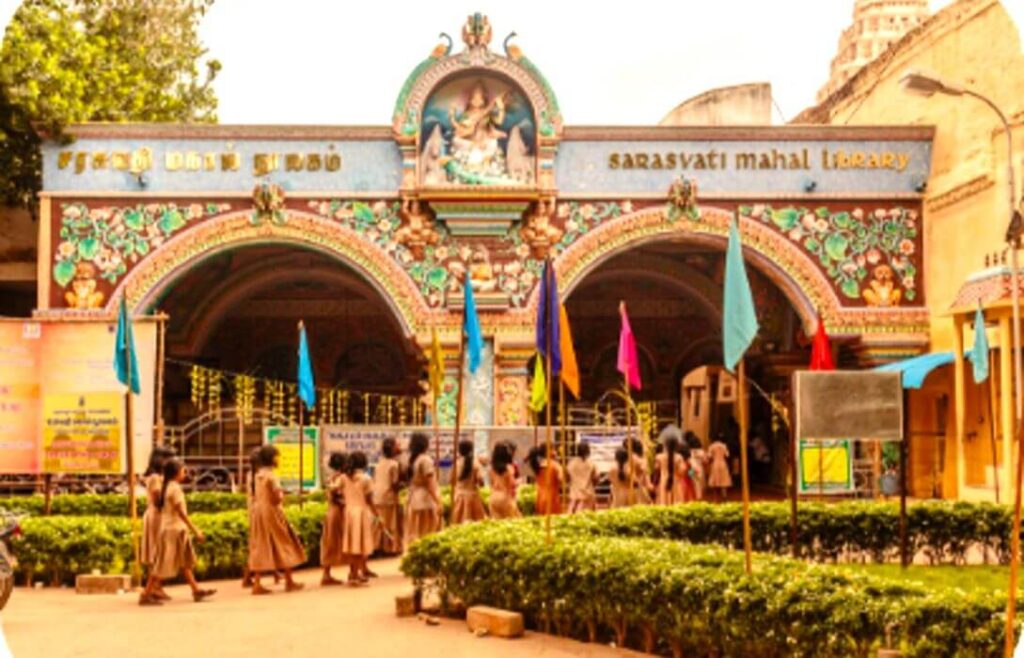
The Saraswathi Mahal Library, also known as Thanjavur Maharaja Serfoji’s Saraswathi Mahal Library, is located within the Thanjavur Palace complex near the East Gate. It was first built as a royal library in the 16th century by the Nayaka monarchs of Thanjavur and was later expanded by the Maratha rulers, especially Serfoji II, a renowned scholar (1798-1832).
Today, it is one of Asia’s oldest and most significant libraries, housing a large collection of palm-leaf manuscripts, paper books, and historical records. The most valuable part of the collection is its over 60,000 palm-leaf manuscripts, covering various subjects such as religion, philosophy, literature, science, and medicine. The library also contains manuscripts in Tamil, Sanskrit, Telugu, Marathi, and English.
Additionally, there are inscriptions, manuscripts, and maps that offer insight into the region’s history. The library is located in a beautiful hall with high ceilings and spacious reading areas, showcasing a mix of architectural styles influenced by the Nayaka and Maratha periods.
Schwartz Church
Entry Fee: Free
Timings: Morning to Evening
Camera: Not allowed
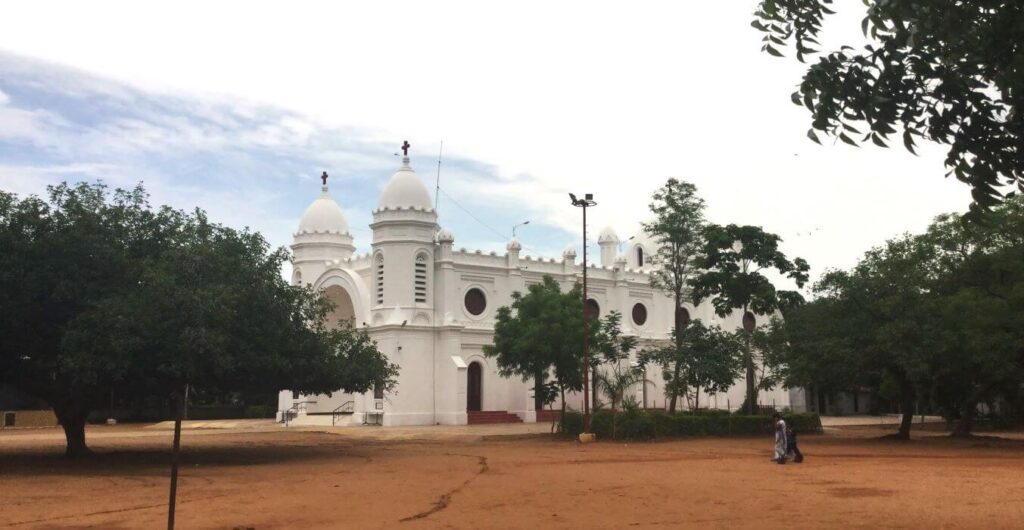
The Schwartz Church, also known as the Christ Church or the Danish Missionary Church, is a historic Protestant church near the Tanjore Palace. It was built in 1779 by Rajah Serfoji, the Maratha monarch of Thanjavur, to honor Danish missionary Reverend Christian Friedrich Schwartz. He played a key role in bringing about educational and social reforms in Thanjavur during the 18th century.
This church stands as a symbol of the cultural and religious connections between Tamil Nadu and Denmark during the colonial period. Simple and elegant in design, the church has a white front and tall minarets, combining European and South Indian architectural influences. Inside, visitors can admire beautiful stained-glass windows, intricate woodwork, and ornate decorations. A sculpture of Reverend Schwartz on his deathbed, accompanied by King Serfoji II and another missionary, can also be seen. The church continues to hold regular Protestant services.
Punnai Nallur Mariamman Temple
Entry Fee: Free
Timings: 09.00 AM to 09.00 PM

The Punnai Nallur Mariamman Temple is a Hindu temple located in Punnai Nallur village, about 7 kilometers east of Thanjavur’s city center. According to mythology, the temple was built in the 17th century by Maratha king Venkoji Maharaja Chatrapati after he dreamt of Goddess Mariamman in the Punnai forest. The temple is dedicated to Mariamman, a protective deity believed to ward off evil and illness. The main deity is said to reside in a white anthill. Mariamman is known for her healing powers and the temple has mud models of body parts that devotees bring for blessings. The temple may not be as grand as others in Thanjavur, but it has its own unique charm and spiritual importance. It hosts various events throughout the year, with the Mariamman Fire Walk being the most significant.
Other Activities Possible in Thanjavur
Bronze Factory
Thanjavur is renowned for its bronze casting, with a rich heritage in creating superb bronze sculptures. The city is home to numerous family-owned workshops specializing in bronze casting, providing a firsthand opportunity to witness the traditional process and the skilled craftsmen in action. These workshops offer an insight into the entire process of creating bronze idols.
Tanjore Painting
Tanjore is known for the unique art form called Tanjore painting, which was traditionally created for temples and royal courts. These paintings depict religious themes, deities, royalty, and scholars, and are distinguished by their vibrant colors, intricate details, and gold leaf embellishments. The paintings use natural pigments from minerals, vegetables, and gemstones, and private art galleries in the city may showcase a variety of Tanjore paintings by contemporary artists.
Veena Making
The art of making the musical instrument Veena in Thanjavur has been a tradition for many centuries. Skilled artisans, known as ‘Veenai aadalar’ (Veena makers), learn this laborious process through generations of their families. They have deep knowledge of selecting wood, carving, and assembling the Veena. Unlike large factories, the production of veenas mostly takes place in small family-run workshops scattered around Thanjavur, often found on the south main street or near the temple.
Tanjore Dolls Making
The place where Tanjore dolls are made is 7 kilometers from Tanjore, near the Punnai Nallur Mariamman Temple. Tanjore dolls, also known as Thanjavur Thalaiyatti Bommai, are traditional Indian bobblehead toys made of clay. They are known for their bright colors, detailed decorations, and unique weighted design, which allows them to wobble when gently touched.
Popular Festivals Celebrated in Tanjore
Natyanjali Dance Festival (February-March)
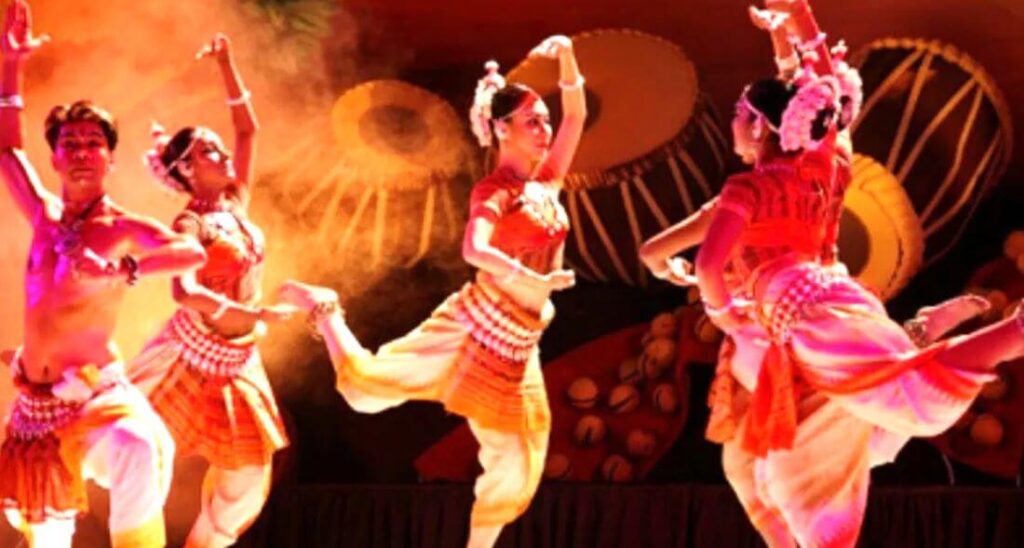
The Natyanjali Dance Festival is a five-day celebration of Indian classical dance forms, particularly Bharatanatyam, held in honor of Lord Shiva. The festival takes place during the Maha Shivaratri festival as a tribute to Lord Shiva, the cosmic dancer. The performances by talented dancers from across India are set against the beautiful backdrop of the Brihadeeswara Temple.
Pongal (January)
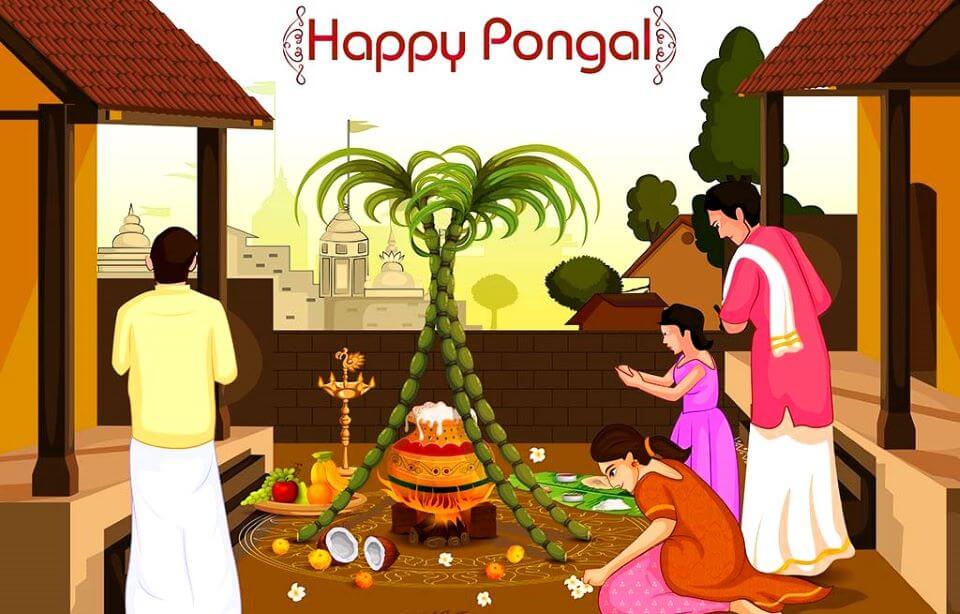
Pongal is a harvest festival celebrated across Tamil Nadu in January. In Thanjavur, the festival comes alive with vibrant decorations, captivating traditional music and dance performances, and special offerings dedicated to the Sun god. A four-day festival, Pongal heralds the start of the Thai month in the Tamil calendar. The festival is a time for expressing gratitude to the Sun god for the abundant harvest. Celebrations include the preparation of delectable sweet rice dishes, adorning homes with lush mango leaves, creating intricate Kolam (rangoli) designs, and even organizing thrilling bullock cart races. This year, the festival will be celebrated on 14th January 2025.
Aiyarappar temple
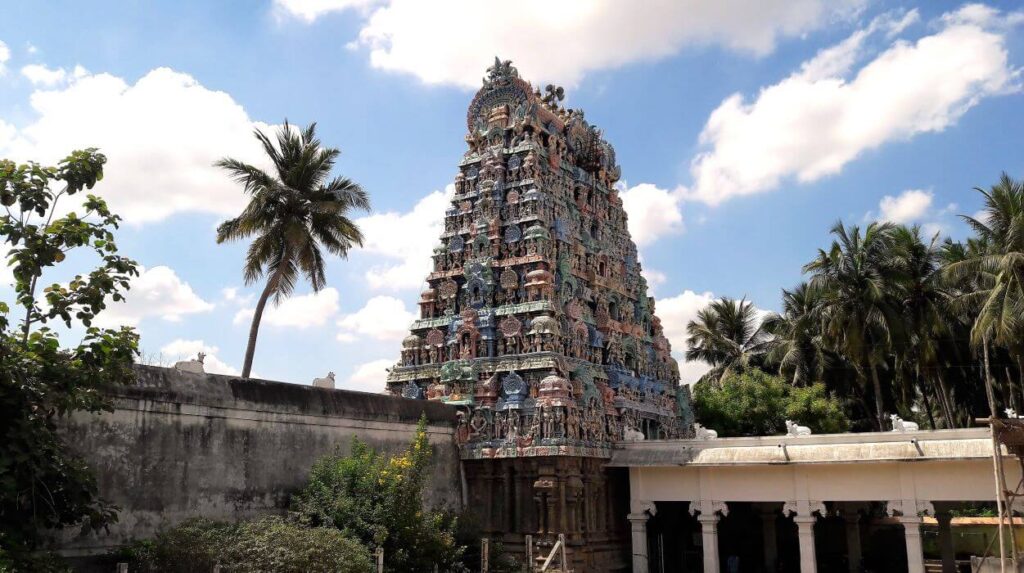
The Aiyarappar Temple, also known as the Panchanadeeswarar Temple, is a Hindu temple dedicated to Lord Shiva. It is located in the village of Thiruvaiyaru and is considered one of the six temples on the banks of the Cauvery River that are revered as equally holy as the Kashi Vishwanath temple in Varanasi. The temple complex is vast and encompasses several shrines, halls, and corridors with Dravidian-style architecture. Various Hindu festivals are celebrated throughout the year, including Shivaratri and Arudra Darisanam. The presiding deity of the temple is Shiva, represented by the holy Shiva Linga, and his consort, Parvati, is depicted as Aram Valartha Nayagi.
Thyagaraja Aradhana (January)
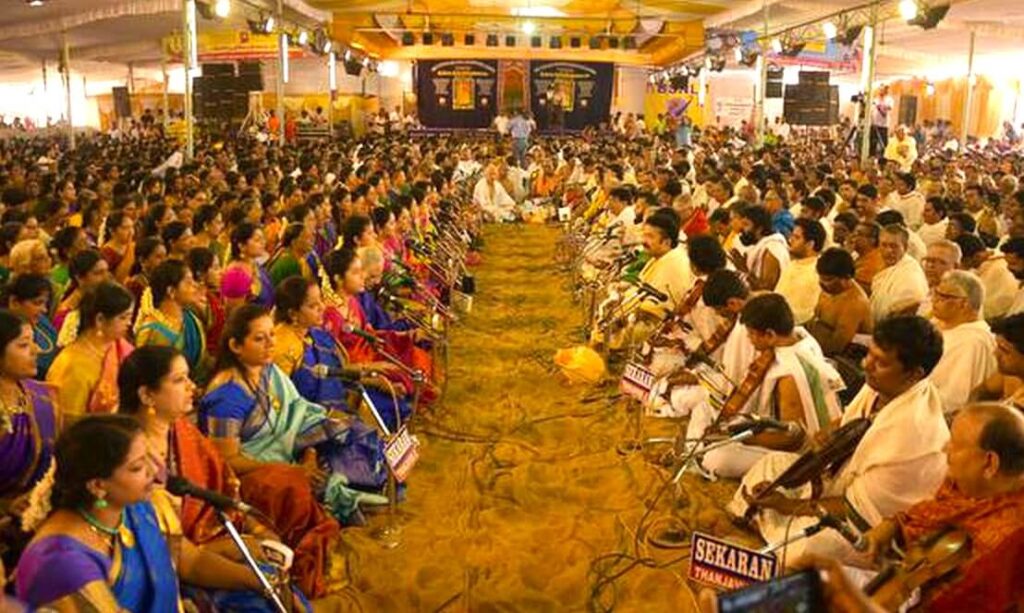
The festival is an eight-day music event dedicated to Saint Thyagaraja, a famous composer of Carnatic music. He, along with his contemporaries Syama Sastri and Muthuswami Dikshitar, are known as the Trinity of modern Carnatic music. Carnatic music is one of the oldest music traditions of India, known for its complex rhythms and improvisation. Musicians from all over the world come to Tanjore to perform and honor Thyagaraja’s legacy. The festival features performances by well-known Carnatic musicians and is a significant event for music lovers.
The Aradhana celebrations of the saint composer are marked by music concerts and performances by leading musicians, and the highlight is when the musicians perform the pancharatna kritis in chorus. The Aradhana is observed on the day when the saint passed away. The festival takes place near Thyagaraja’s resting place on the banks of River Cauvery. Every year, the Thyagaraja Aradhana in Thiruvaiyaru is celebrated between January and February.
Conclusion
In essence, Thanjavur is not just a destination but an experience—a journey through time that allows visitors to immerse themselves in the grandeur of the Chola dynasty, the artistic vibrancy of South India, and the enduring traditions that continue to shape the city’s identity.

